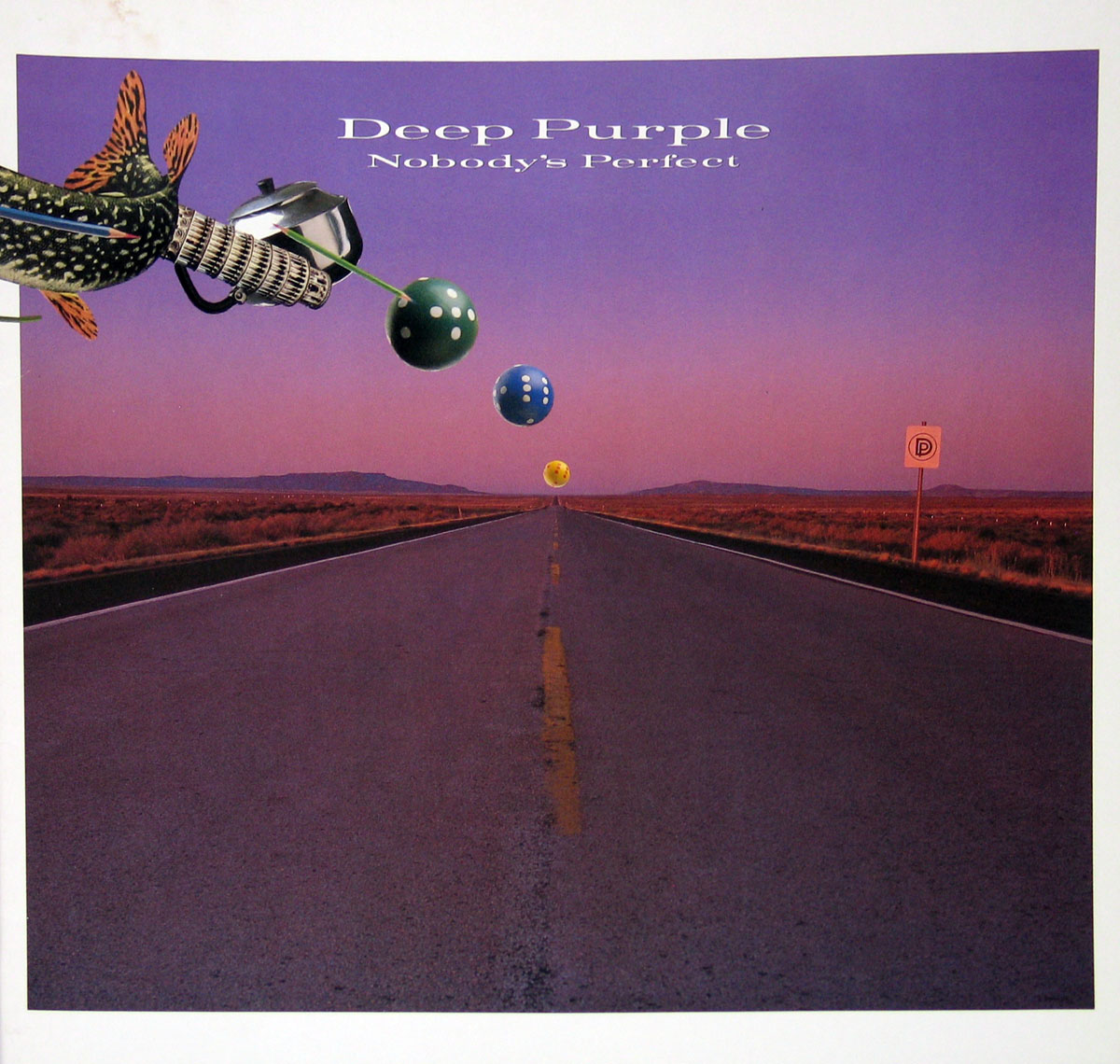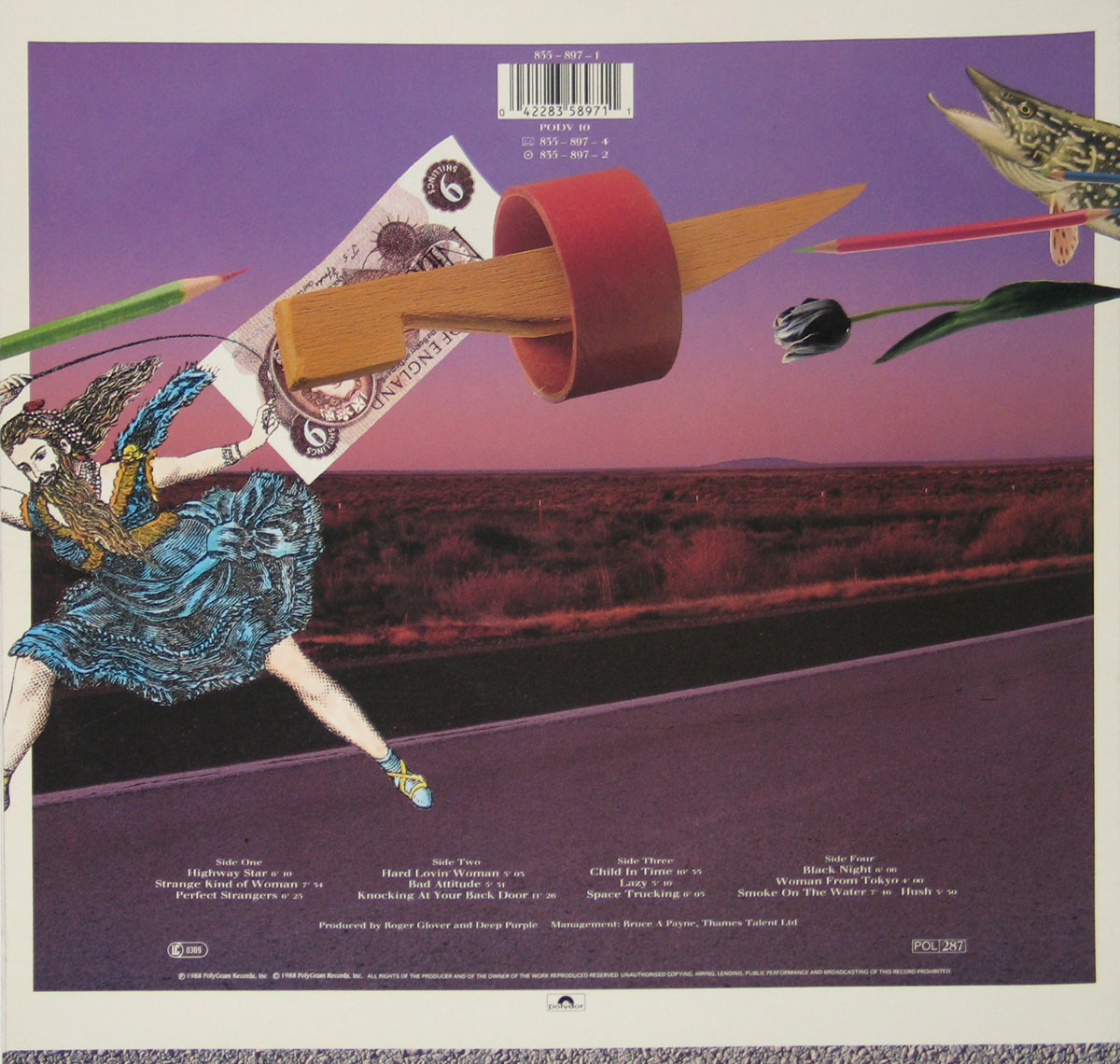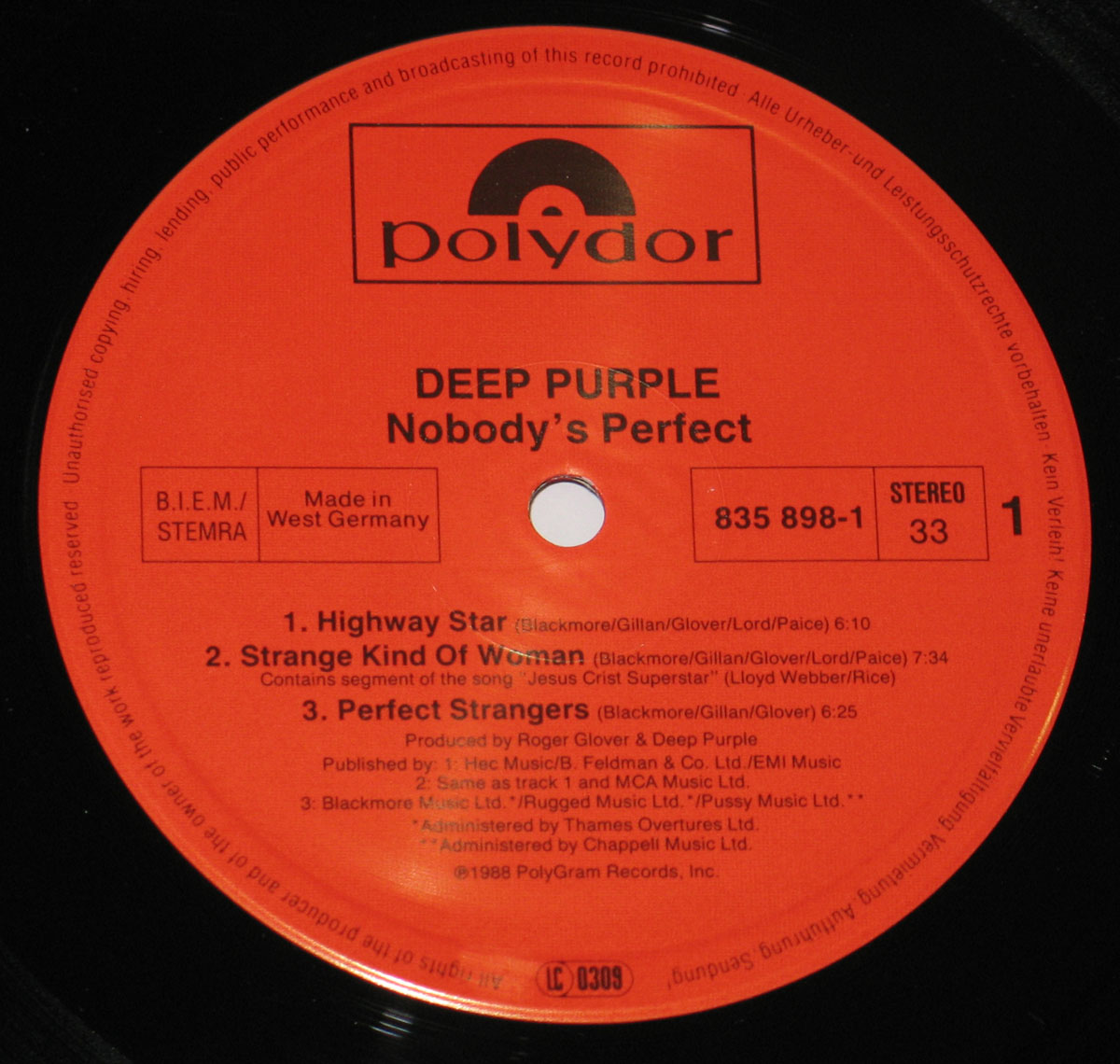Band-members, Musicians and Performers
- Ian Gillan - vocals, congas, harmonica
Ian Gillan, a British singer from London, is best known as the lead singer of the legendary British hard rock and heavy metal band, Deep Purple. He also had a stint as the lead singer of Black Sabbath from 1983 to 1984.
Ian Gillan was born on August 19, 1945, in Chiswick, Canada Bay, New South Wales, Australia. His exceptional vocal abilities and charismatic stage presence propelled him to the forefront of the music industry.
more...
Gillan's musical journey with Deep Purple began in 1970 when he joined the band and worked alongside the Royal Philharmonic Orchestra, conducted by Malcolm Arnold. At the age of 24, he made significant contributions to their album "In Rock" (1970). The following year, at 25 years old, Gillan's powerful vocals featured prominently on Deep Purple's iconic album "Machine Head" (1971) and "Fireball" (1971). His distinctive voice continued to captivate audiences as he recorded with the band for albums like "Made in Japan" (1972) and "Who Do We Think We Are" (1973).
In 1983, Ian Gillan took on a new musical venture as a member of Black Sabbath, working on their album
"Born Again."
His time with the band allowed him to explore different musical styles and showcase his versatility as a vocalist. The following year, in 1984, he returned to Deep Purple and contributed to the album "Perfect Strangers" (1984). His rejoining of the band marked a triumphant comeback and reaffirmed his status as one of rock music's iconic frontmen.
Ian Gillan's commitment to music remained unwavering as he continued to work with Deep Purple on albums such as "The House of Blue Light" (1987) and "Nobody's Perfect" (1988), released when he was 41 and 42 years old, respectively. Throughout his career, Gillan's powerful voice, range, and dynamic stage presence have made him one of the most influential and recognizable figures in rock music.
Ian Gillan's contributions to the music industry, both as a solo artist and as the lead singer of Deep Purple and Black Sabbath, have left an indelible mark on the rock and heavy metal genres. His distinct vocal style and unforgettable performances have earned him a place among the greatest rock vocalists of all time.
Timeline of IAN Gillan musical career
1962: Gillan joins his first band, The Javelins, as their lead vocalist.
1965: Gillan becomes a member of Episode Six, a British rock band known for their energetic live performances.
1969: Deep Purple, an English rock band, invites Gillan to audition for the lead vocalist position. He joins the band and records the album "Deep Purple in Rock", which marks a shift towards a heavier and more progressive sound for the band.
1970: Deep Purple releases the album "Deep Purple in Rock", which becomes a commercial success and establishes the band as pioneers of hard rock and heavy metal.
1973-1975: Gillan leaves Deep Purple due to creative differences and forms a band called simply "Gillan". They release a series of albums and achieve moderate success, with notable hits like "New Orleans" and "Trouble".
1983: Gillan rejoins Deep Purple, replacing David Coverdale as the lead vocalist. The band releases the album "Perfect Strangers", which reunites the classic Deep Purple lineup and receives critical acclaim.
1989: Gillan leaves Deep Purple once again, citing exhaustion and creative differences.
1992: Gillan forms a new band called "Gillan's Inn" and releases an album under the same name. The band continues to tour and release new music intermittently.
1993: Gillan reunites with Deep Purple once more, and the band releases the album "The Battle Rages On..".. However, tensions within the band lead to Gillan leaving once again in 1994.
1999: Gillan rejoins Deep Purple for their 25th anniversary and continues to be an active member of the band to this day. They release several successful albums, including "Bananas" (2003) and "Now What?!" (2013).
2020: Deep Purple releases their 21st studio album, "Whoosh!", featuring Gillan's powerful vocals and songwriting contributions.
- Ritchie Blackmore - guitar
Ritchie Blackmore, born Richard Hugh Blackmore on April 14, 1945, in Weston-super-Mare, North Somerset, England, is an iconic English guitarist known for his contributions to the world of rock music. With a career spanning several decades, Blackmore has left an indelible mark on the genre and has been a driving force behind legendary bands such as Deep Purple and Ritchie Blackmore's Rainbow.
Born to parents Lewis J. Blackmore and Violet Short, Ritchie Blackmore showed a passion for music from an early age. He began playing the guitar as a teenager and quickly developed his skills, drawing inspiration from various musical styles. His dedication to the instrument paid off when he joined the band Shades of Deep Purple in 1968, which later became simply Deep Purple.
more...
As the lead guitarist of Deep Purple, Blackmore played a pivotal role in shaping the band's sound and achieving commercial success. During his time with Deep Purple, from 1968 to 1994, Blackmore contributed his distinctive guitar playing to numerous albums, including "In Rock" (1970), "Machine Head" (1972), and "Made in Japan" (1972). These albums showcased his exceptional talent for crafting powerful riffs, melodic solos, and intricate guitar arrangements that became hallmarks of Deep Purple's music.
In 1994, after years of creative differences and lineup changes within Deep Purple, Ritchie Blackmore decided to leave the band to explore new musical horizons. He formed his own rock band called Ritchie Blackmore's Rainbow, which allowed him greater creative freedom. With
Rainbow
, Blackmore continued to captivate audiences with his guitar prowess and released several successful albums, including "Rising" (1976) and "Straight Between the Eyes" (1982).
However, in 1997, Blackmore made a surprising shift in musical direction. He transitioned from rock to folk rock and embarked on a new journey with his girlfriend and later wife, Candice Night. Together, they formed the duo Blackmore's Night, fusing elements of Renaissance music, folk, and rock. With Blackmore's masterful guitar playing and Night's enchanting vocals, the duo garnered a loyal following and released a string of albums, including "Shadow of the Moon" (1997) and "Ghost of a Rose" (2003).
Ritchie Blackmore's ability to adapt to different musical styles and his unwavering commitment to his craft have solidified his status as one of the greatest guitarists in rock history. Known for his electrifying live performances and his unique blend of blues, classical, and hard rock influences, Blackmore has inspired generations of musicians and continues to be revered as a guitar virtuoso.
Throughout his life, Blackmore has been married multiple times. He married Margit Volkmar sometime between 1965 and 1969, Bärbel between 1969 and 1971, and Amy Rothman between 1981 and 1983. However, his most notable and enduring marriage has been to Candice Night, whom he married on May 8, 2008, when he was 63 years old and Night was 37 years old.
Ritchie Blackmore's musical journey has been one of constant exploration and reinvention. From his influential years with Deep Purple to the establishment of Rainbow and his subsequent foray into folk rock with Blackmore's Night, he has left an indelible mark on the rock music landscape. His virtuosity, innovative playing style, and enduring passion for music have earned him a rightful place among the legends of rock guitar.
Candice Night,
While best known for her enchanting vocals and lyrical contributions to Blackmore's Night, Candice Night is an accomplished singer-songwriter and multi-instrumentalist who adds a captivating element to every project she touches.
From Long Island to a Renaissance Fair of the Heart
more...
Born in Long Island, New York, Candice Night's early life included a brief stint as a model. Music, however, was her true calling. A fateful meeting with legendary guitarist Ritchie Blackmore in 1989 led to not only a romantic connection, but the seeds of what would become their long-running collaborative project, Blackmore's Night.
Blackmore's Night: A Journey Through Time
Blackmore's Night has crafted a unique sonic blend merging Renaissance and folk influences with modern instrumentation. Night's ethereal vocals and poetic lyrics are central to their sound. She often plays woodwind instruments like the pennywhistle, adding another layer of delicate beauty to songs like "Shadow of the Moon" and "Under a Violet Moon." Blackmore's Night has released over ten studio albums, transporting listeners to a simpler time with their enchanting music.
- Jon Lord - organ, keyboarsds
Jon Lord, whose full name was John Douglas Lord, was a highly talented British composer and keyboard player. He is best known for his exceptional performances with renowned bands such as Whitesnake, Deep Purple, as well as his successful solo career.
more...
Jon Lord was born on 9 June 1941 in Leicester, Leicestershire, England, United Kingdom. He was the first child of Reginald Charles Lord, born on 18th December 1907, and Miriam Hudson, born on 16th October 1912. Sadly, when Jon Lord was 54 years old, his mother Miriam Hudson passed away in 1995. The following year, when he was 55, his father Reginald Charles Lord also passed away in 1996.
In terms of his personal life, Jon Lord was married twice. He first married Judith Feldman in 1969 when he was 28 years old. However, their marriage ended in divorce in 1975. Together, they had a son named Sarah Lord. Later in the same year, at the age of 34, Jon Lord married Vickie Gibbs, and they had a son named Amy Lord.
Jon Lord's professional journey as a musician began in 1968 when he joined the band Shades of Deep Purple. He was 27 years old at the time. The following year, in 1969, he continued his musical career as a member of the band Self-Titled (Mk I), also known as Deep Purple, when he was 28. Throughout the 1970s, he contributed his musical talents to various Deep Purple albums, including "In Rock" (1970), "Machine Head" (1971), "Fireball" (1971), "Made in Japan" (1972), "Who Do We Think We Are" (1973), and others. Additionally, during this time,
Jon Lord released solo albums
such as "Windows Continuo On Bach" (1974) and "Sarabande" (1975).
In the mid-1970s, Jon Lord expanded his musical horizons by working with Whitesnake, joining them in 1978 for
their album "Trouble."
He continued his collaboration with Whitesnake on the album "Live in the Heart of the City" (1980). In the early 1980s, he released another solo album titled "Before I Forget" (1982). Later, he reunited with Deep Purple for albums such as "Perfect Strangers" (1984), "The House of Blue Light" (1987), and "Slaves and Masters" (1990).
Tragically, on 16th July 2012, Jon Lord passed away in London, England, United Kingdom at the age of 71. His remarkable contributions to the world of music, both through his performances with Deep Purple, Whitesnake, and his solo work, left a lasting legacy. In 2012, he was laid to rest in Hambleden (St. Mary) New Churchyard, located in Hambleden, Wycombe District, Buckinghamshire, England. Jon Lord's exceptional talent and unforgettable compositions continue to inspire musicians and fans alike, ensuring that his impact on the music industry will never be forgotten.
- Roger Glover - bass
Roger David Glover, known professionally as Roger Glover, was born on November 30, 1945, in Brecon, Sir Powys, Wales, United Kingdom. He is the first child of Norman Glover and Brenda Glover.
Glover's career in the music industry began to take shape in the late 1960s when he joined the psychedelic rock band Episode Six as their bass guitarist. However, it was in 1969 when Glover received a major breakthrough by joining the iconic
rock band Deep Purple
. At the age of 24, he became the bass guitarist for Deep Purple, a role that would define much of his musical journey.
more...
In 1970, Glover contributed to Deep Purple's collaboration with the Royal Philharmonic Orchestra, conducted by Malcolm Arnold. This project showcased the band's versatility and experimental approach. The following year, at the age of 25, Glover played bass guitar on the highly influential albums "In Rock" and "Fireball." These albums solidified Deep Purple's status as one of the pioneers of hard rock and heavy metal.
Glover's contributions to Deep Purple continued throughout the 1970s and beyond. In 1972, at the age of 26, he played on the live album "Made in Japan," which is widely regarded as one of the greatest live recordings in rock history. He also played bass guitar on the album "Who Do We Think We Are" released the same year.
During his time with Deep Purple, Glover also ventured into music production. In 1973, at the age of 27, he produced the album "Loud And Proud" by Nazareth. He continued his work as a producer in 1974 with Nazareth's album "Rampant Mooncrest." In 1976, at the age of 30, Glover produced Rory Gallagher's album "Calling Card," showcasing his skills behind the scenes.
In 1979, Glover briefly left Deep Purple and joined
Ritchie Blackmore's Rainbow
as their bass guitarist. He played on the album "Down To Earth" and then rejoined Deep Purple in 1984, at the age of 38, for the album "Perfect Strangers." Glover's return brought a renewed energy to the band, and the album was a critical and commercial success.
Throughout the 1980s and 1990s, Glover continued to be an integral part of Deep Purple's lineup. He played bass guitar on albums such as "The House of Blue Light" (1987), "Nobody's Perfect" (1988), and "Slaves and Masters" (1990). His remarkable talent on the bass guitar added depth and precision to Deep Purple's sound.
In addition to his work with Deep Purple and Rainbow, Glover has also released solo albums and collaborated with other artists over the years. He has shown his versatility as a musician and a songwriter, continually pushing the boundaries of rock music.
Roger Glover's contributions to the world of rock music, both as a bass guitarist and a producer, have left an indelible mark. His ability to create melodic bass lines, combined with his technical expertise, has made him one of the most respected figures in the industry. His career, spanning several decades, showcases his passion, dedication, and unwavering commitment to his craft.
- Ian Paice - drums
|


